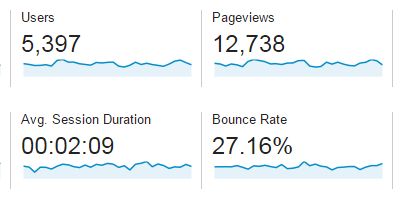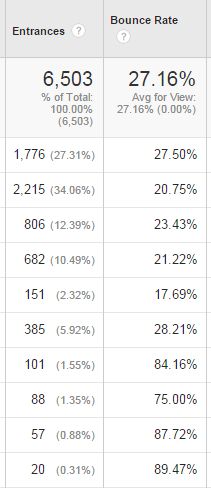In website statistics, the term bounce rate means:
- the percentage of visitors who viewed only one page
Here’s how Google describes ‘bounce rate’ in its documentation:
Bounce Rate is the percentage of single-page sessions (i.e. sessions in which the person left your site from the entrance page without interacting with the page).
Bounce rates are one way of measuring user engagement and can be applied to many different elements on a site: the bounce rate for the entire site, a particular page, a particular keyword, a referrer, and so on.
In Google Analytics, here’s how the bounce rate for an entire site is shown in the Audience Overview:

While this is what it looks like when viewing the statistics for individual pages:

On the face of it, a high bounce rate indicates a problem: people are not staying on the website after viewing one page. Like any statistic, however, the bounce rate needs to be taken in context. For example, in the statistics above, the pages with bounce rates in the 80% range are mobile-only pages. Mobile users are much less likely to browse through sites – they get their information and go.
What's Your Take?